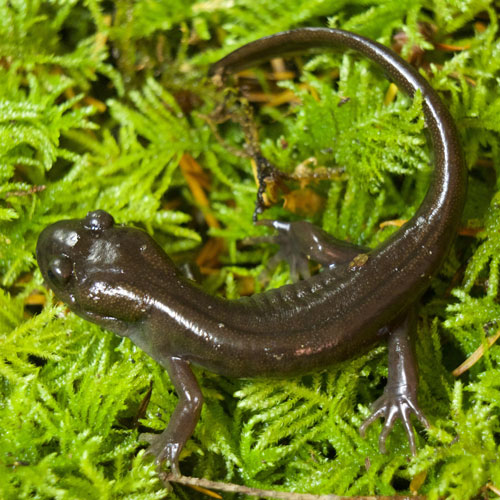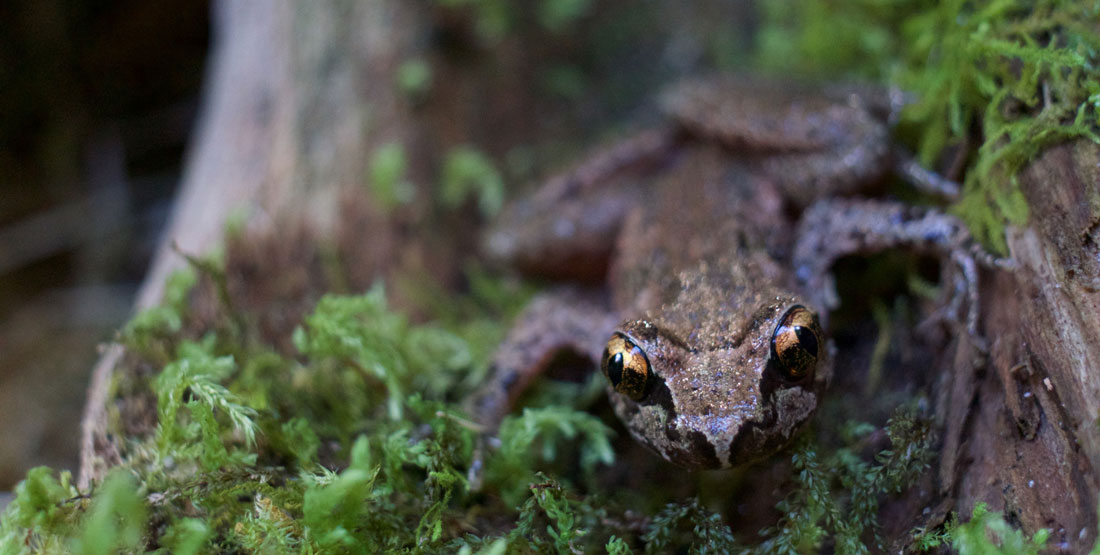Why should I care if amphibians are endangered?
Amphibians are considered a key indicator species and are the first species affected by changing environmental conditions. When amphibians go extinct or have a reduction in their population numbers, it is usually a sign that the entire ecosystem is in danger. Habitat destruction, non-native species (predatory fish, bullfrogs, fungus, pathogens), climate change (alters temperature and water levels), pollution and diseases (especially chytridiomycosis, caused from the chytrid fungus) all have been shown to contribute to worldwide amphibian declines.
What is the chytrid fungus?
The chytrid fungus is a fungus discovered in 1998 that is responsible for many amphibian deaths around the world. It causes a disease in amphibians called chytridiomycosis, which is believed to affect the body’s ability to regulate water and salt absorption, leading to death. Scientists believe the fungus is originally from Africa and is being spread across the globe (it has now been found on 5 continents). At this point in time, there is no definitive answer to why this is happening. People are most likely the primary culprit, but other things could be spreading the fungus as well like migratory birds, insects or fish.
How does the chytrid fungus kill amphibians?
The fungus disrupts their ability to absorb water and they probably die from dehydration. Amphibians have permeable skin that is a vital organ essential to their survival; it is used as a means of water and oxygen absorption. The chytrid fungus attacks the underside of amphibians in an area known as the “drinking patch.” The drinking patch is where water absorption takes place (how frogs drink water) and is critical in maintaining proper salt balance. When the fungus infects the drinking patch it disables the body’s ability to maintain proper salt levels and infected amphibians show signs of severe dehydration. Improper salt balances can affect the function of the heart and other organs that can ultimately lead to death.
Where did the chytrid fungus come from?
Genetic analyses of chytrid fungus from several areas around the world have pointed to an origin in Africa. Most likely people have spread the fungus to other areas in the world. Once the chytrid fungus is introduced in an area, animals can carry it to surrounding areas. The fungus has been shown to survive on geese feet and other migratory animals, which may be helping the fungus spread to new areas.
What eats frogs?
Many creatures (including humans!) seem to think that frogs are pretty tasty. Some of their common predators are: snakes, birds, raccoons, turtles, fish, mammals (big and small) and other bigger amphibians! Many salamanders eat small frogs and bullfrogs are quite good at eating frogs (including their own species!)
Can people eat frogs? What kind of frogs do people eat?
Yes, people from all over the world eat frog legs. There are frog farms in many parts of the world, including the United States to meet the high demand for frog legs. Sadly, the human appetite for frog legs are detrimental to many wild amphibian species that are already suffering declines in their population numbers. This is due to overexploitation of wild populations and also the transport of edible frogs to different parts of the globe that have led to introduced species, many of which have brought new diseases to some areas. Some cultures even eat frog eggs.
It is estimated that well over 200 million frogs are killed for food each year. The most common type of frog that people eat are Bullfrogs (American and African). Other edible frogs include: pigfrogs, Malayan giant frogs, leopard frogs, green frogs, pickerel frogs and the Giant Ditch frog. The hunting for frogs for eating is done at night and is called frog ‘gigging.’
What amphibians are endangered in Washington state?
As of October 2012, the following amphibians in Washington state are listed as follows:
- Federal species of concern:
- Larch Mountain Salamander
- Western Toad
- Van Dyke salamander
- Rocky Mountain tailed frog
- Northern Leopard frog.
Federal listing candidates:
- Oregon Spotted Frog.
The IUCN listed species are as follows:
Near threatened listing:
- Western Toad
- Larch Mountain Salamander
- Cascades Frog
- Columbia Torrent Salamander
- Cascade Torrent Salamander
Vulnerable listing:
- Olympic Torrent Salamander
- Oregon Spotted Frog
- Washington Department Fish and Wildlife:
Monitored species:
- Cascade Torrent Salamander
- Columbia Spotted Salamander
- Dunn’s Salamander
- Rocky Mountain Tailed Frog
- Van Dyke’s Salamander
- Western Toad
Sensitive Species:
- Larch Mountain Salamander
Endangered:
- Oregon Spotted Frog
- Northern Leopard frog
What can I do to help endangered amphibians in Washington state?
Here are some ways to help our native frogs:
- Get educated about the threats to amphibians and help educate other people
- Protect local habitats
- Switch to biodegradable cleaning supplies and find organic substitutes for pesticides
- Recycle everything you can and reduce your water usage
- Get involved in local amphibian events like Save the Frogs
- Learn about invasive species and what you can do help eliminate them
- Do not keep amphibians you find as pets! Let them stay in the wild where they belong and can breed the next generation of amphibians.

Amphibians & Reptiles of Washington
Do you know where rattlesnakes live in our state? Or which salamander breathes through its skin? Explore the fascinating diversity of the 26 species of amphibians and 28 reptiles found in Washington state.

